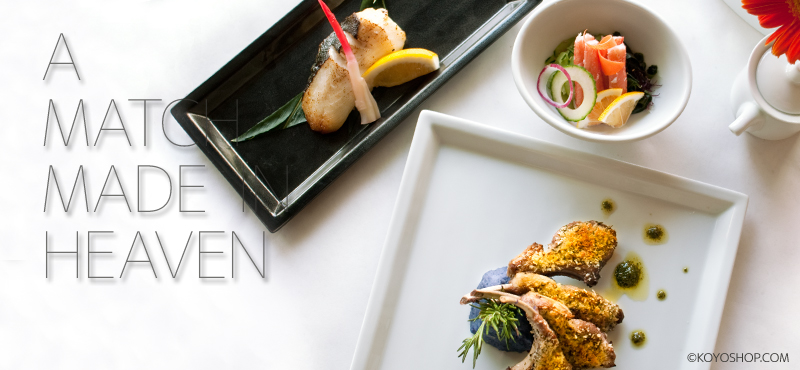
SAKE
It is said that sake has more versatility than wine. It can be served ambient, warm, hot, cold or chilled. It can be consumed straight or with diverse foods. It can be mixed with other ingredients to make mixed drinks or cocktails. It can be consumed in all four seasons, day and night, indoor or outdoor, on special occasions or in ordinary times. Sake is a new alcoholic beverage for our diverse and infusing ‘food and beverage’ culture and is enjoyed at many occasions.
SERVING
Sake has traditionally been served warm or hot except for occasions when a warming device is not available. Drinking sake cold was considered bad manners. Sake brewers in western Japan have been brewing sweet, full-bodied sake for many years. They had a traditional way of making and drinking sake. But Japanese eating habits have changed to include a wider variety of foods, including western styles. To cope with this change, sake has also changed accordingly over the past 40-50 years. Some sake is now intended to be served cold and is brewed accordingly. Sake lovers have options to drink either chilled, warmed or hot sake.
Generally speaking, warm sake is good for drinking straight in cold weather with heavily flavored foods, and cold sake is good for drinking straight on sunny, warm days with delicately flavored foods, like seafood including sushi, sashimi or tofu. Cold sake can be a good alternative to dry white wine without pressing a fruity flavor. Think about dry cold sake with raw oyster on the shell. Sake can be served on the rocks for a treat on sunny days.
In the U.S. market, poor quality, less expensive sake is often served warm in a ceramic Tokkuri carafe, and more sophisticated, expensive sake is served cold in a bottle. Consumers may be unable to tell what kind of sake they are drinking warm from a ceramic carafe. Consumers may know what kind of cold sake they are drinking from a bottle if they read the label, but most are printed in Japanese. Niigata Meijo sake carries a hybrid label with English and Japanese which consumers are able to read.
FOOD PARING
Sake has been consumed along with food in old-time banquets and formal dinners. Since Buddhism in Japan historically forbade animal foods except for fish, sake accompanied seafood and vegetarian meals. It was occasionally enjoyed with only salt or miso (soybean paste). As western people are shifting their eating habits from carnivorous to omnivorous to herbivorous, sake is becoming a new beverages of choice with its unique history and culture.
Sake goes well with many kinds of foods because of its characteristic flavor and blunt taste. Since gaining popularity with sushi and other Japanese foods, sake now compliments all kinds of Japanese and Asian fusion foods. Some people are even trying sake paired with meat dishes, cheese, and Italian foods.
COOKING
Sake has been used for marinating and adding flavor to sauces or condiments. It has the effect of tenderizing meat or fish and reducing unfavorable food odors. One thing to remember when cooking with sake, however, is not to use cheap sake with poor flavor as it carries through to cooked food. Always use good sake for cooking.
Image by courtesy of Koyoshop.com, the leader in restaurant supplies.